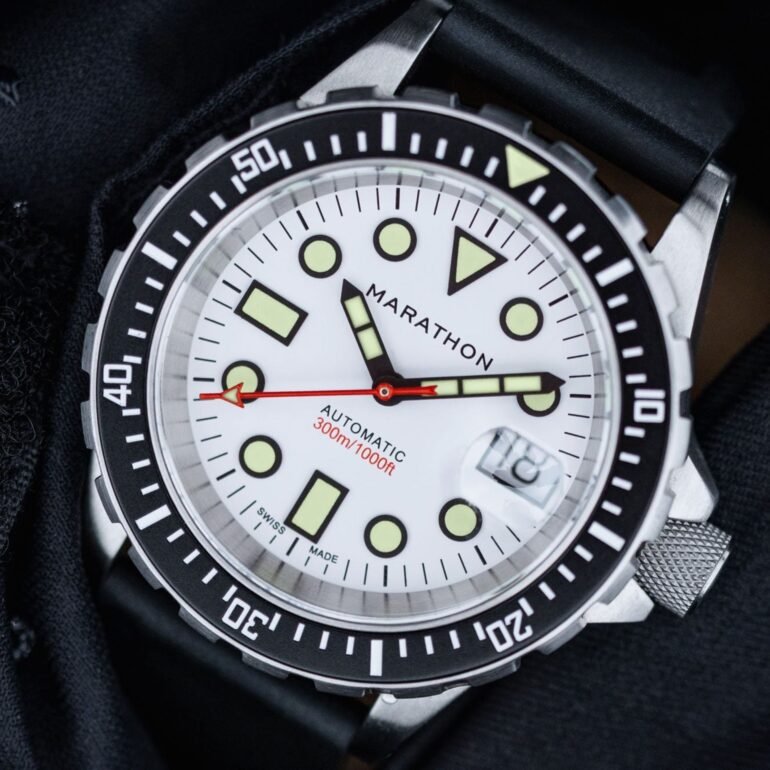The move paid off. In 1941, the company received its first order from the Royal Canadian Air Force. This one move kick-started the brand’s future. Marathon continued fulfilling contracts over the next few decades, slowly refining its business to the government and military communities. Beginning in the 1970s, the American military began to search for new suppliers to fulfill its contracts. Once a veritable hotbed of domestic watch manufacturing, the industry had reached its zenith following the Second World War. It now faced steep competition from lower-priced Swiss watches as well as the influx of lower-cost watches from Asia, and showed few signs of improving.
These early Marathon watches were all assembled domestically in Canada from Swiss parts; in the 1990s, the company established a manufacturing facility in La Chaux-de-Fonds, where its watches are manufactured today. All Marathon watches use parkerized surgical-grade 316L stainless steel. The use of parkerization, a chemical process where ferrous metals like steel undergo a zinc or manganese phosphate coating that results in a durable matte finish that protects against rust, is distinctly military — a solid nod to Marathon’s foremost client.
Today, Marathon watches are issued by the U.S. Government and military, as well as first responders, the Canadian Armed Forces, the Israeli Defense Force, and more. One of Marathon’s strengths has been the brand’s other timekeeping devices. Marathon produces clocks, alarms, and stopwatches for offices and warships, fulfilling important government contracts. This is still the core of the brand’s business — over 90% of Marathon products are intended for government and military use.

For years, the only way to get a Marathon watch was to either be issued one in an issuing country’s armed forces or to wait for a retailer to get hold of excess contract runoff. This led to a slow burn in enthusiast circles, with awareness concentrating on the Military Watch Resource forum. Thankfully, this is no longer the case. Marathon began selling to the civilian market through its own webshop as well as retailers. The enthusiast market has become an increased focus for the brand, which now sponsors events like Wind Up in a Bay and the Toronto Timepiece Show, showcasing just how important the community has become to the brand.
The current Marathon collection is broken down into three series: Diver’s, Pilot’s, and General Purpose. Each features a distinct visual language designed to meet function far before form entered the picture. Perhaps best known of all are Marathon’s Search and Rescue (SAR) series of dive watches. Built with Royal Canadian Air Force (RCAF) Search and Rescue Technicians in mind and designed in partnership with the watch community, the SAR was first launched in 2001. This initial version was updated in 2005 to include the tritium-tube dial more commonly associated with the brand; however, the original SAR design (OSAR) was revived in 2024 to great fanfare.
The SAR — known as the Government Search and Rescue (GSAR) in its automatic form and the Tritium Search and Rescue (TSAR) are readily available through government acquisition programs, along with the other members of the SAR family — the 46mm JSAR and the 36mm MSAR. The line also includes an “arctic” white dial, so named for its continued service on both of the Earth’s poles by American and Canadian forces.
Jacob Van Buren
2025-11-05 17:00:00

